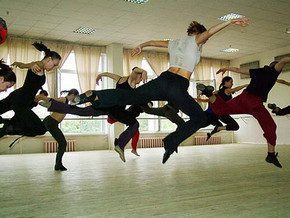What is voice production and where does it begin?
Many people have often heard the combination “voice production” in music schools, but not everyone understands exactly what it means. Some people call this a set of exercises designed to give the voice a certain style of singing, others think that this is its tuning for proper singing, according to the requirements of vocal art. In fact, depending on its direction and the natural characteristics of the voice of the beginning vocalist.
There is academic and folk, jazz and pop voice staging, as well as choral voice staging based on classical vocals. It includes not only vocal exercises, but also characteristic chants in the direction that suits you for voice development.
Many music schools offer vocal and voice training lessons. At first glance, they are almost the same from each other, but in fact they have different directions. If vocal lessons are designed to improve singing in a certain manner, then voice training is general vocal exercises for beginners, the purpose of which is not only to determine the desired direction for the performer, but also to acquire mandatory skills such as breathing, developing articulation, overcoming clamps and etc.
In many music schools, where there are several areas of singing (for example, academic and pop vocals), there are lessons in initial voice training, the results of which will help you choose the most successful direction for further development. Choir classes also offer voice training lessons, aimed not at developing solo singing skills, but at initial vocal training. This is necessary so that the voice sounds correctly in the choir and does not stand out from the general choral sonority. Sometimes voice training refers to singing lessons for children under 10 years old with breathing exercises, learning complex intervals and teaching pure intonation.
Therefore, those who do not yet know how to learn to sing from scratch should sign up for initial voice training lessons in order to then determine their future direction. After all, there are voices that are more suitable for classical opera vocals than for folk singing, and vice versa. And there are voices that are more suitable for solo singing than for choral or ensemble singing, despite training in academic vocals. Voice training will allow you not only to gain basic singing skills, but also to learn a lot of interesting things about the characteristics of your voice, its timbre, range, etc.
The purpose of voice training is to teach basic singing skills. It includes not only a set of exercises, but also the development of the performer’s auditory culture. Therefore, the teacher can give you not only special exercises, but also recordings of various singers, since incorrect singing, tightness in the voice and various inconveniences can be associated with a lack of auditory culture, because on the radio and on music channels you can rarely hear opera arias or even just correct singing. Many modern performers, in order to attract attention, begin to invent a catchy but incorrect style of singing, imitation of which can lead not only to inconvenience, but also to injury to the vocal cords. Therefore, listening to examples of correct singing is also included in the complex of voice training and, if your teacher has not yet given you examples, ask him about it yourself.
The next part of voice production is the formation of respiratory support. These are various exercises with slow exhalations, hissing, and air pushes from the diaphragm designed to ensure that the voice has solid respiratory support when singing. Voices with poor breathing sound very dull and their characteristic feature is the inability to hold long notes. They begin to fade and gradually lose color and purity of intonation, so breathing properly will allow you to easily sing notes of varying durations.
Voice training sessions also include the removal of various vocal clamps, which can impede not only easy singing, but also clear articulation. Beginners often experience a mismatch between their speech and vocal voices, so it becomes difficult for them to pronounce words when singing. This barrier is easy to overcome when all voice restrictions are removed. You will not experience discomfort not only while singing, but even in speaking. And vocal exercises and chants for beginners, simple but useful, will help you with this. Also, depending on the learning results, the teacher may give you exercises to position your voice in the direction most suitable for your voice.
In addition, voice production creates easy singing in different parts of your range. You can easily sing not only high notes, but also low notes. When you learn to sing freely and confidently, and your voice has a clear intonation based on well-placed breathing, then you can choose the direction for further training in vocal art. For some it will be folk or academic singing, others will choose pop or jazz. The main thing is your desire to sing, and teachers will tell you how to learn to sing from scratch and help you take your first steps in this wonderful art.





